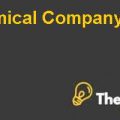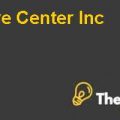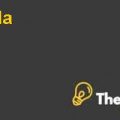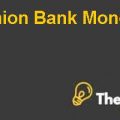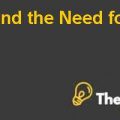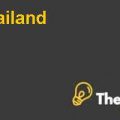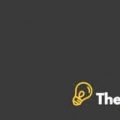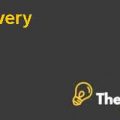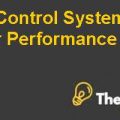
Introduction:
Agnico Eagle Mines Limited was established thirty years ago in Canada. The competency of the company was its low cost of production with growing production output and reserves. The Canadian Cadillac Belt was rich in minerals and Agnico’s primarily operations were established there. AEM core product is gold but they also extract other minerals like zinc, copper and silver.
In Canada, the largest gold deposit was located in LaRonde and AEM was the single company who owns a single mining site. During the year 2001, AEM invested its capital to establish a new shaft which was inaugurated in the month of August of the same year. From this investment, AEM was expecting to grow its operations in terms of quantity from 5000 to 7000 tons of gold per day.
Problem Identification:
AEM was facing problem in decline of the value of per share price and shareholders were worried about it. The Exhibit 6 of the case study shows a declining trend in the return on invested capital and financial ratios were in negative percentages. The company is engaged in the mining of gold for several years as it is known to be one of the world’s best performers in the gold mining industry. The management of the company was concerned about the over valuation of stock prices. The company needs to perform a basic valuation to find the performance of the company. In order to do that, the company could use a traditional approach for valuation that is Discounted Cash flow valuation (DCF). Along with valuation, the company needs to identify the ability to mine currently un-mined gold worth.
Analysis:
Valuation through Discounted Cash Flow Model (DCF):
A discounted cash flow is a valuation approach used for the valuation of the company; it identifies the positives of investing in a certain project. With the purpose of the value estimation of the company through operations, the DCF model has been applied. However, the valuation is not only based on the operations as there are certain other items which are non-operating in nature. To calculate the value of the company, it has to add-up its present value of the free cash flow and terminal value along with the present value of the tax shields on the tax loss carry forwards. It also included cash and marketable securities along with non-operating assets. Furthermore, it also included tax expense carry forwards along with after tax funding of the pension plan. Most of the data required for the estimation of firm’s value was provided in the Exhibit 11 of the case. Further, WACC has been used as discount rate to calculate the net present value of cash flows.
Value of the company from operations:
In order to calculate free cash flow from operations, present value of the forecasted cash flow has been calculated with the addition of terminal value in the last year. The cash flow projections are given in the Exhibit 9 of the case. For the purpose of projection of income statement and balance sheet of the company, percentages of sales method were used in the case. From the recent expansion and exploration, the company has projected an incremental growth of 11%.
The company has decided to do valuation on April 30th therefore; discounting for the whole year cannot be done, rather year one discounting was done by eight months that is 8/12. Further, the same discounting has been done for year one. From the second year, discounting has been done by (1 + 8/ 12) and so on. The data has been taken from the Exhibit 9 and 10 of the case and the calculation for the valuation has been done in the spreadsheet.
Terminal Value:
The terminal value of the company is calculated after the seven year explicit period. The calculation of the terminal value is based on Net Operating Profit Less Adjusted Taxes plus Amortization along with growth and weighted average cost of capital. Net Operating Profit Less Adjusted Taxes plus Amortization has been calculated through net operating profit minus adjusted taxes plus amortization. Basic data for the calculation of the terminal value is in the Exhibit 9 of the case study and the calculation for the terminal value has been done in the Excel sheet named as Analysis of Discounted Cash Flows.
The value of Tax Assets:
The next thing which has been done in the analysis is value of Tax assets. To find the value of tax assets, the management of the company must take into account the development expense carry forward and loss carry forwards. This would help the company to reduce its tax payable account in the long run. Furthermore, expense carry forward and loss carry forward the basic values are extracted from the appendix of the case. The amount for the tax shield has been extracted from the case that is the tax rate and tax loss carries forwards. This amount is expected to last for at least six years. In addition to that, it has been discounted from before tax cost of debt because the company needs to make sure about the availability enough profits. Because of this fact, risk of debt is similar or equal to tax loss carry forwards.
The value of the tax shield that can be easily afforded by the above carry forwards has been calculated in the spread sheet. The value has further added to the value of firm from its operations to calculate the total value................
This is just a sample partial case solution. Please place the order on the website to order your own originally done case solution.

